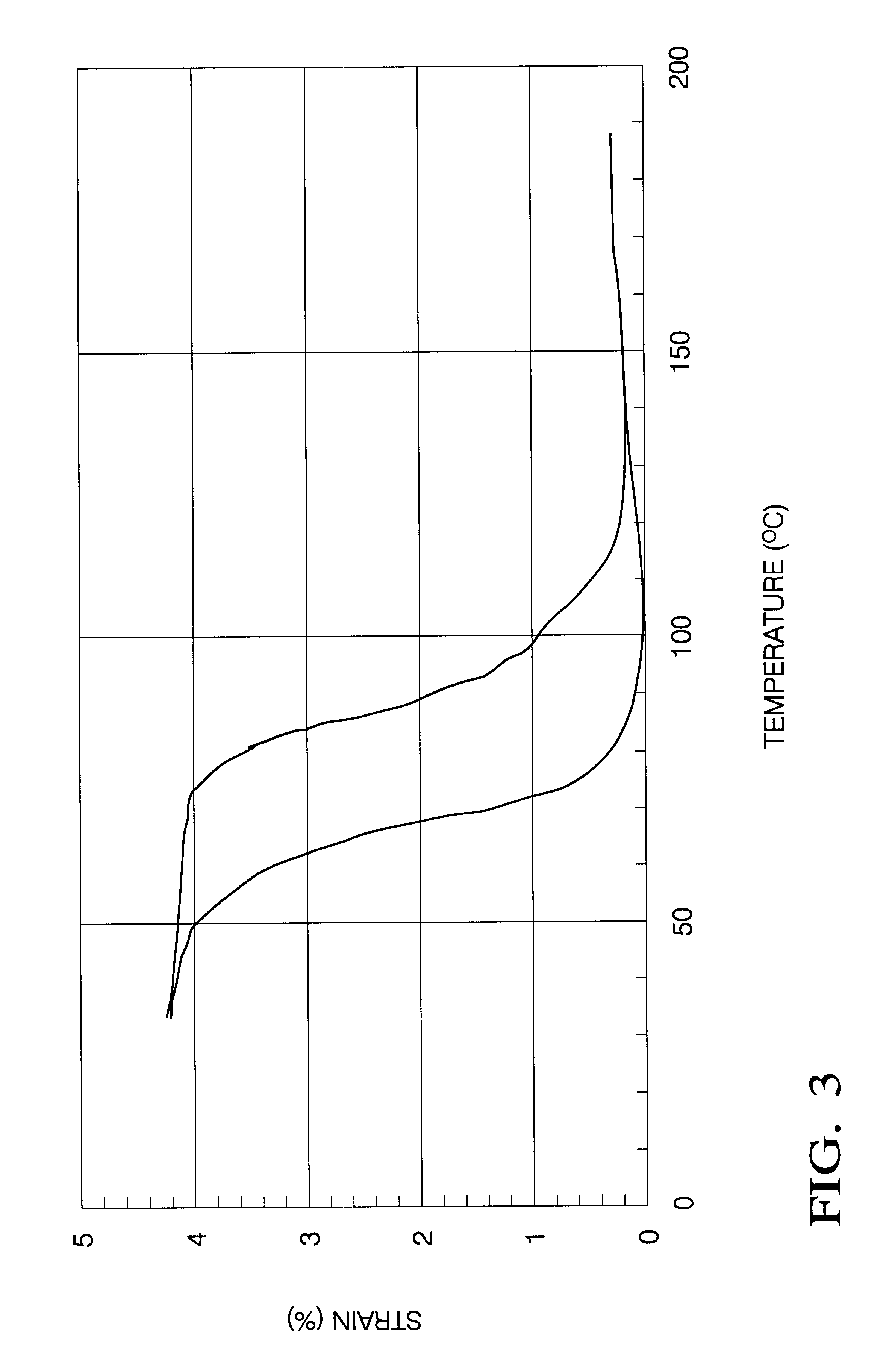Production of binary shape-memory alloy films by sputtering using a hot pressed target
a technology of shape-memory alloy and target material, which is applied in the direction of vacuum evaporation coating, electrolysis components, coatings, etc., can solve the problems of redundant titanium substantially degrading the mechanical properties of the material, the use of such target materials in the production of shape-memory alloy films has not been recognized as a viable approach, and the adverse effects of oxygen contamination on the shape-memory properties of niti alloys
- Summary
- Abstract
- Description
- Claims
- Application Information
AI Technical Summary
Benefits of technology
Problems solved by technology
Method used
Image
Examples
example 1
4.5 .mu.m thick NiTi binary films were sputter deposited on 5"-diameter oxide passivated Si substrates from an 8" Ni.sub.47 Ti.sub.53 hot pressed target. Deposition parameters included: base pressure 5.times.10.sup.-7 torr before deposition, working gas Ar pressure 1.5 mTorr during deposition, target-to-substrate distance 3.2 inches, deposition power 1 kW, substrate temperature 400-420.degree. C. and deposition time 53 minutes. Chemical composition of the deposit was measured to be Ni.sub.49 Ti.sub.5 l around the central area of the wafer by x-ray Energy Dispersive Spectrum (EDS) equipped on a Scanning Electron Microscope (SEM). The as-deposited film had shape-memory effect without any further thermal treatment. The transformation temperatures of delaminated film were measured by Differential Scanning Calorimetry (DSC) and the results are shown in FIG. 1. Shape-memory properties were measured with 60.times.3 mm strips which were thermally cycled under constant stresses. During therm...
example 2
Another thin film deposition process performed was a two-step procedure, i.e., depositing amorphous material at a substantially lower substrate temperature and then annealing it at high temperature to acquire SME. This procedure was more commonly practiced in SMA thin film deposition. In this process, the target was also a Ni.sub.47 Ti.sub.53 hot pressed target. Deposition parameters were: base pressure 5.times.10.sup.-7 torr before deposition, working gas Ar pressure 1.5 mTorr during deposition, target-to-substrate distance 3.7 inches, deposition power 1 kW, substrate temperature 200.about.250.degree. C. and deposition time 55 minutes. Chemical composition of the deposit was also close to Ni.sub.49 Ti.sub.51. The as-deposited material then was annealed at 550.degree. C. for 30 minutes in a chamber with vacuum better than 1.times.10.sup.-5 torr during annealing. Annealing process could be either before delaminating or after delaminating. Likewise, shape-memory properties were measur...
PUM
| Property | Measurement | Unit |
|---|---|---|
| Pressure | aaaaa | aaaaa |
| Pressure | aaaaa | aaaaa |
| Pressure | aaaaa | aaaaa |
Abstract
Description
Claims
Application Information
 Login to View More
Login to View More - R&D
- Intellectual Property
- Life Sciences
- Materials
- Tech Scout
- Unparalleled Data Quality
- Higher Quality Content
- 60% Fewer Hallucinations
Browse by: Latest US Patents, China's latest patents, Technical Efficacy Thesaurus, Application Domain, Technology Topic, Popular Technical Reports.
© 2025 PatSnap. All rights reserved.Legal|Privacy policy|Modern Slavery Act Transparency Statement|Sitemap|About US| Contact US: help@patsnap.com



